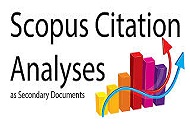Pengembangan Perangkat Model Blended Learning untuk Meningkatkan Efektivitas Penerapan Pendidikan Jarak Jauh di SMKN 2 Gerung
DOI:
https://doi.org/10.33394/jk.v4i2.1126Keywords:
Perangkat Pembelajaran, Blended Learning, Pendidikan Jarak Jauh.Abstract
Abstract: This study aims to develop a set of blended learning models to improve the effectiveness of the
application of a long distance education in SMK 2 Gerung. This research used research and development (R & D). This research developed learning tools that support the effectiveness of the blended learning application. The tools to be developed were modules, syllabus, learning implementation plans and guidebooks for Schoology use. Product development process was done through the stages of defining, designing and developing after being tested. The design of this study was only one group for the implementation of product testing. The research was conducted in Class X of SMK 2 Gerung West Lombok. Based on the results of students learning data, it was obtained asymp values. Sig = 0.000 which means smaller than <0.05. So, it can be concluded that there is a difference between students learning outcomes of pretest and posttest which means that the blended learning model can increase the effectiveness of long distance education. The mastery of the standard score of learning outcomes for posttest scores = 84 from the value of the standard score 72 and the percentage of students who complete up to 80%. Based on the responses of students, it was found as much as 80% of students who answered the criteria of Strongly Agree (ST). From these results, the tools of the blended learning model can support the effectiveness of the implementation of long distance education.
Â
Abstrak: Penelitian ini bertujuan untuk mengembangkan perangkat model blended learning untuk
meningkatkan efektivitas penerapan pendidikan jarak jauh di SMKN 2 Gerung. Penelitian ini termasuk jenis reaserch and development (R&D). Melalui penelitian ini akan mengembangkan perangkat pembelajaran yang mendukung efektivitas penerapan blended learning. Perangkat yang akan dikembangkan berupa modul, silabus, rencana pelaksanaan pembelajaran dan buku panduan pemanfaatan Schoology. Proses pengembangan produk melalui tahap pendefinisian (define), perancangan (design), dan pengembangan (develop) setelah itu diuji coba. Desain penelitian ini hanya satu kelompok untuk pelaksanaan uji produk. Penelitian dilaksanakan di Kelas X SMKN 2 Gerung Lombok Barat. Berdasarkan olah data hasil belajar siswa diperoleh nilai Asymp.Sig = 0.000 artinya lebih kecil dari < 0.05. Sehingga dapat disimpulkan bahwa ada perbedaan antara hasil belajar siswa untuk pretest dan postest artinya perangkat model blended learning dapat meningkatkan efektivitas pendidikan jarak jauh. Ketuntasan hasil belajar rata-rata nilai postest = 84 dari nilai KMM 72 dan presentase siswa yang tuntas 80%. Berdasarkan respon siswa sebanyak 80% siswa yang menjawab pada kriteria Sangat
Setuju (ST). Dari hasil tersebut bahwa perangkat model blended learning dapat menunjang efektivitas
pelaksanaan pendidikan jarak jauh.
References
Kuntarto, Eko dan Asyhar, Rayandra. 2016. Pengembangan Model Pembelajaran Blended Learning Pada Aspek Learning Design Dengan Platform Media Sosial Online Sebagai Pendukung Perkuliahan Mahasiswa. https://repository.unja.ac.id Artikel
Jurnal-Blended Learning (akses Maret 2018).
Nugroho. Agung, Ariyawan. 2007. Optimalisasi Peran Teknologi
Informasi (Internet) Dalam Meningkatkan Efektifitas Dan Kualitas Proses Pembelajaran PJJ S1 PGSD. Majalah Ilmiah Pembelajaran No 2 (2007): Jurnal Majalah Ilmiah Pembelajaran Edisi Oktober 2007. Publisher: Majalah Ilmiah Pembelajaran http://id.portalgaruda.org (Di akses Tanggal 02/06/17)
Parwitaningsih . 2010. Modal Sosial Dan Modal Manusia Pada Pendidikan Jarak Jauh Di Universitas Terbuka. Jurnal Pendidikan Terbuka dan Jarak Jauh, Volume 11, Nomor 1, Maret 2010, 26-34. (Di akses Tanggal 02/06/17) Pedoman Pelaksanaan Pendidikan Jarah
jauh. Tahun 2016. http://kuliahdaring.dikti.go.id/s/berkas/view/1/panduan/pjj (diakses 26 Desember 2016)
Sugiyono. 2012. Metode Penelitian Pendidikan (Pendekatan Kuantitatif, Kualitatif dan R & D. Bandung: Alfabeta
Trianto. 2007. Model-Model Pembelajaran Inovatif Berorientasi
Konstruktivistik, Konsep, Landasan Teoritis-Praaktek Dan
Implementasinya. Jakarta prestasi pustaka publisher
Downloads
Published
How to Cite
Issue
Section
Citation Check
License
License and Publishing AgreementIn submitting the manuscript to the journal, the authors certify that:
- They are authorized by their co-authors to enter into these arrangements.
- The work described has not been formally published before, except in the form of an abstract or as part of a published lecture, review, thesis, or overlay journal.
- That it is not under consideration for publication elsewhere,
- That its publication has been approved by all the author(s) and by the responsible authorities – tacitly or explicitly – of the institutes where the work has been carried out.
- They secure the right to reproduce any material that has already been published or copyrighted elsewhere.
- They agree to the following license and publishing agreement.
Authors who publish with JK agree to the following terms:
- Authors retain copyright and grant the journal right of first publication with the work simultaneously licensed under a Creative Commons Attribution License (CC BY-SA 4.0) that allows others to share the work with an acknowledgment of the work's authorship and initial publication in this journal.Â
- Authors are able to enter into separate, additional contractual arrangements for the non-exclusive distribution of the journal's published version of the work (e.g., post it to an institutional repository or publish it in a book), with an acknowledgment of its initial publication in this journal.
- Authors are permitted and encouraged to post their work online (e.g., in institutional repositories or on their website) prior to and during the submission process, as it can lead to productive exchanges, as well as earlier and greater citation of published work.
- Open Data Commons Attribution License, http://www.opendatacommons.org/licenses/by/1.0/ (default)

This work is licensed under a Creative Commons Attribution-ShareAlike 4.0 International License.








